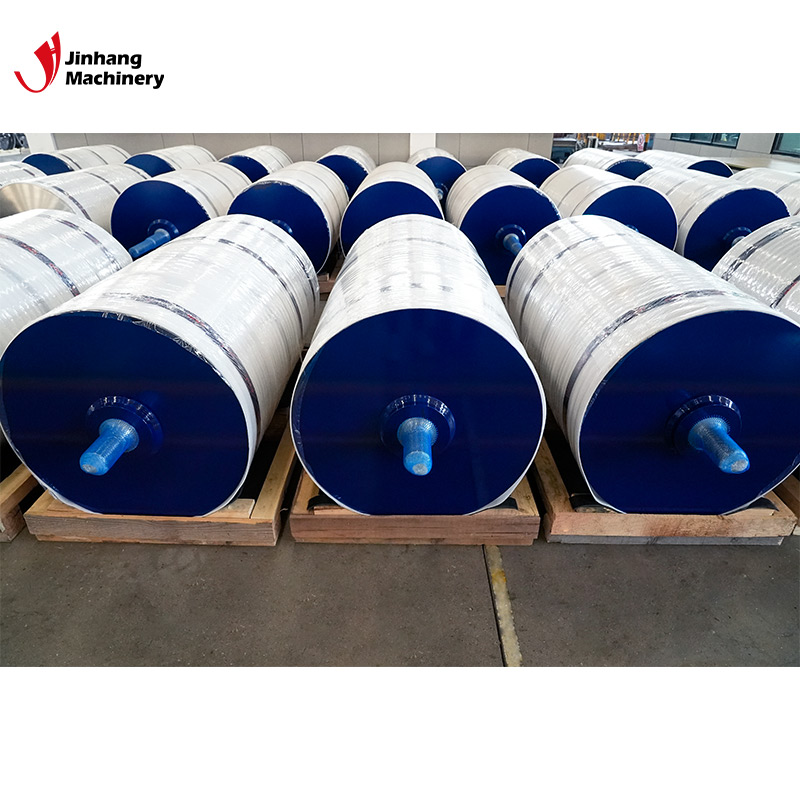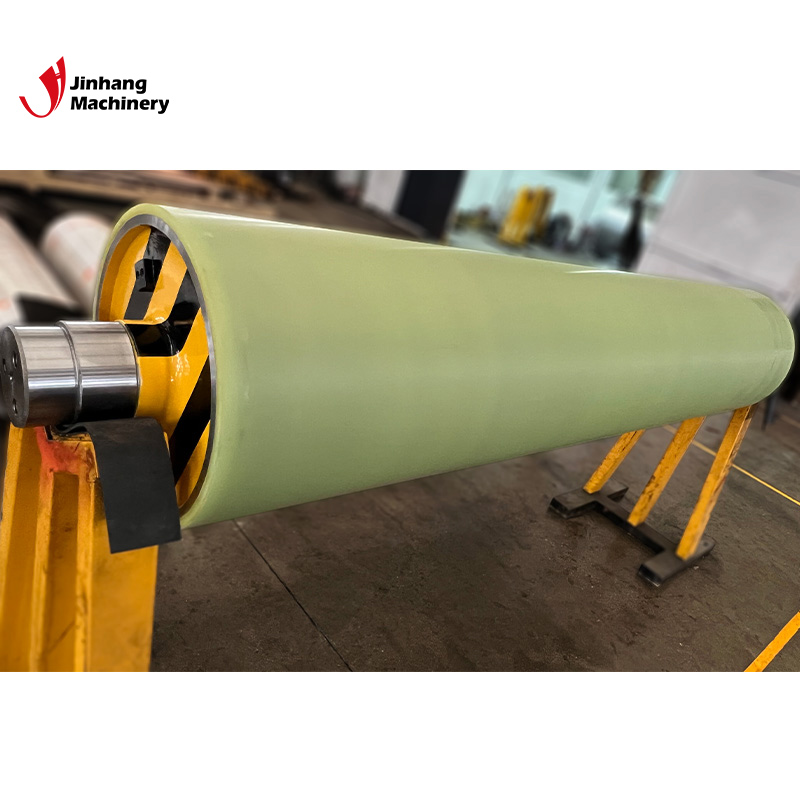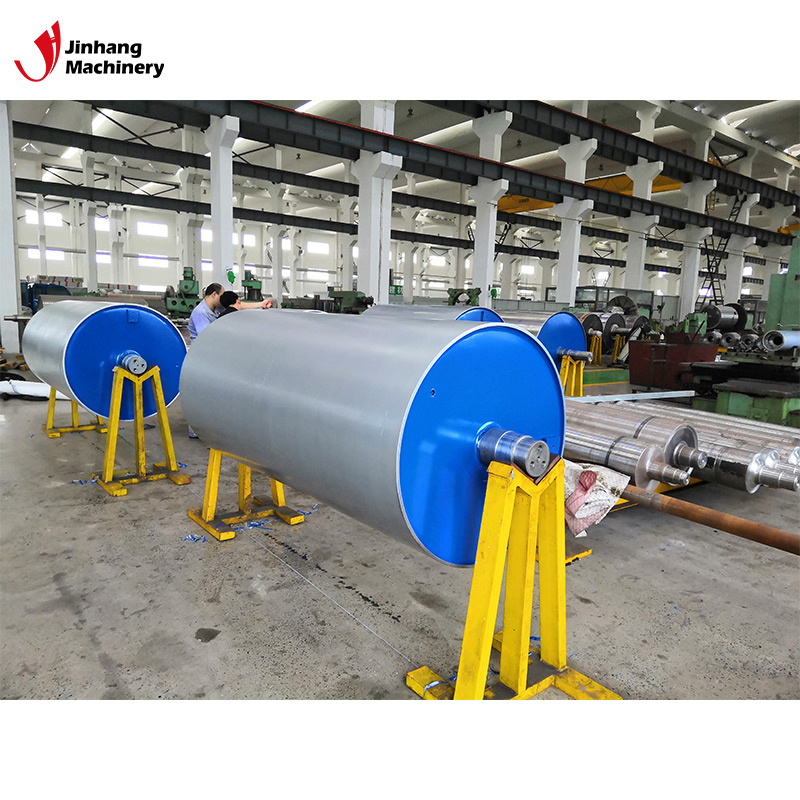What is the operating temperature range of industrial rubber rollers?
Industrial rubber rollers play a vital role in modern manufacturing, especially in industries such as coating, printing, papermaking, textiles, metal processing, and plastic processing. The role of rubber rollers is not only to transmit power or perform embossing tasks, but its surface properties, elasticity, and durability often determine the efficiency of the entire production process and product quality. Therefore, understanding the performance of rubber rollers under different operating temperature conditions is of great significance to industrial production.
This article will deeply analyze the operating temperature range of industrial rubber rollers, explore the impact of temperature on the performance of rubber rollers, reveal the working mechanism of rubber rollers under different temperature conditions, and how to choose the appropriate rubber roller materials and designs in various industrial occasions to ensure efficient and stable production processes.

What is an industrial rubber roller?
Industrial rubber rollers are a type of roller covered or coated on a metal substrate with rubber material, and are widely used in production processes that require high elasticity, wear resistance, and certain temperature resistance. Rubber rollers can be customized according to production needs, and different rubber types, hardness, and surface treatment methods can be selected to achieve the best working results.
The main functions of industrial rubber rollers include:
● Imprinting and coating: In printing, coating and other processes, rubber rollers are used to evenly apply ink, coating, etc. on the surface of the substrate.
● Transmission and friction: In mechanical transmission, material handling and other processes, rubber rollers provide stable transmission and power through friction with other objects.
Dampening and buffering: In some high-precision processing processes, the elasticity of rubber rollers can effectively reduce vibration and improve processing accuracy and stability.
● Protection and isolation: The softness of rubber rollers can avoid damage to processing materials or equipment during direct contact, especially in the production of precision parts, rubber rollers can provide effective protection.

What effect does temperature have on the performance of industrial rubber rollers?
In industrial applications, temperature not only affects the physical properties of rubber, but also affects the working efficiency and service life of rubber rollers. Temperature changes may cause changes in the hardness, elasticity, wear resistance, aging speed and other aspects of rubber rollers. Depending on the temperature, the performance of industrial rubber rollers will also be different, so it is very important to control and optimize the working temperature of rubber rollers.
1. Effects of low temperature
When industrial rubber rollers are exposed to low operating temperatures, the elasticity and flexibility of rubber materials will gradually decrease. As the temperature drops, the mobility between rubber molecules decreases, resulting in an increase in the hardness of the rubber, and a significant decrease in softness and elasticity, which will directly affect the roller's embossing, transmission and friction performance. In some cases, low temperatures may also cause cracks or damage to the surface of the rubber roller, thereby affecting its service life.
Effects of low temperature environment:
● The elasticity of the rubber roller decreases, which is manifested as the material hardening and loss of flexibility.
● Under extremely low temperature conditions, cracks may appear on the rubber surface, especially for rubber materials that have not been treated for low temperature resistance. ● Some specific types of rubber, such as natural rubber or soft rubber, show poor low temperature resistance at low temperatures and are prone to aging and cracking.
Therefore, when using industrial rubber rollers in low temperature environments, it is necessary to select rubber materials with good low temperature resistance, such as chloroprene rubber (CR), silicone rubber, etc. These materials can maintain a certain elasticity and toughness at low temperatures, thereby ensuring that the rubber roller works normally under low temperature conditions.
2. Effects under high temperature
High temperature is another important factor affecting the performance of rubber roller. Under high temperature, the molecular chain structure of rubber material will change, resulting in degradation of its physical properties. Excessive temperature will cause the hardness, elasticity and wear resistance of rubber roller to decrease, and even cause the rubber to melt, swell or peel off, seriously affecting its normal operation.
Effects of high temperature environment:
● The hardness of rubber decreases, and it loses its original elasticity and support function.
● Under high temperature, the rubber surface may age, crack or decompose, and in severe cases, even cause the surface of rubber roller to fall off.
● Under some special high temperature environments, rubber may lose its original friction properties, resulting in defects or equipment failures in the production process.
Therefore, when using rubber roller under high temperature conditions, it is necessary to select high temperature resistant rubber materials, such as fluororubber (FKM), silicone rubber (VMQ), etc. These rubber materials can maintain good performance at higher temperatures and are not prone to aging, deformation or damage.
3. Effects of temperature fluctuations
In some industrial production processes, rubber rollers often face the challenge of temperature fluctuations. A sudden increase or decrease in temperature may have an instantaneous effect on the performance of the rubber roller, causing stress accumulation and deformation of the material. Long-term temperature fluctuations may also cause fatigue damage or accelerated aging of the rubber roller.
Impact of temperature fluctuation environment:
● Sudden high or low temperatures may cause deformation and performance degradation of the rubber.
● Long-term temperature fluctuations may cause fatigue aging of rubber materials, thereby shortening their service life.
● Temperature fluctuations may also accelerate the chemical aging of the rubber roller, especially when it comes into contact with substances such as grease, chemical solvents, etc., temperature fluctuations will increase its decomposition rate.
To cope with the impact of temperature fluctuations, the design and material selection of rubber rollers should take into account changes in the working environment. For example, composite rubber materials or rubbers with good thermal stability can be used to enhance their adaptability to temperature fluctuations.

What is the operating temperature range of industrial rubber rollers?
Different types of industrial rubber rollers have different operating temperature ranges depending on the selected materials. Common industrial rubber rollers can be roughly divided into the following operating temperature ranges according to their material properties:
● Natural rubber roller: Natural rubber has good elasticity and wear resistance, but poor temperature resistance, and the operating temperature range is usually -10°C to 70°C. Beyond this temperature range, the performance of natural rubber may drop significantly.
● Neoprene rubber roller: Neoprene has good low temperature resistance and oil resistance, and its operating temperature range is roughly between -30°C and 120°C, so it is suitable for low temperature and medium high temperature application environments.
● Silicone rubber roller: Silicone rubber has good high temperature resistance, and the operating temperature range is usually -50°C to 250°C, which is suitable for high temperature environments, such as thermoplastic processing, baking and printing.
● Fluorine rubber roller: Fluorine rubber is resistant to high temperature and corrosion, and the operating temperature range is usually -20°C to 250°C. It is widely used in chemical processing, oil, natural gas and other industries.

Your Trusted Manufacturer of Customized Rolls and Cylinders
Looking for a trusted manufacturer of high-precision rolls? JH Machinery has been producing high-quality rolls since 2001. With our ISO 9001 certification and advanced machinery, we specialize in manufacturing rolls in various shapes and sizes, including heating, cooling, and mirror rolls. Our rolls are used in industries ranging from metallurgy to automotive testing. We offer low prices, bulk discounts, and customized solutions to fit your exact requirements. Request a quote from our factory today for wholesale prices on all our high-performance products!
